Recent Articles
Popular Makes
Body Types
10 High-End Electric and Hybrid Cars
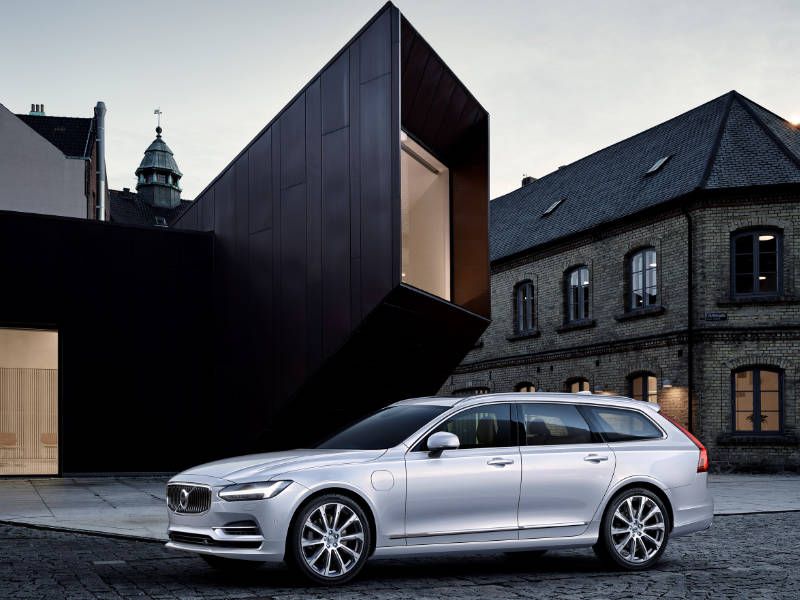
2017 Volvo V90 T8 City ・ Photo by Volvo
These 10 high-end electric and hybrid cars illustrate how the luxury segment is not only at the forefront of new technology with semi-autonomous systems and trending away from fossil fuels, but also challenging stereotypes. What was once a conservative class is now exciting and dynamic. Sure, a lot of the old names are still there, but they’re adopting different approaches these days. There’s still a ways to go, though. Out of necessity, our choices are more eclectic than electric, but if we added up all the gasoline saved over these cars’ regular counterparts, perhaps we could afford one of them at the end of a year. High-end driving remains an expensive pursuit, regardless of the gasoline bill.
2017 Acura NSX
Some hybrids are focused on economy. This one is more focused on energy — and plenty of it. As well as a twin-turbocharged 3.5-liter V6, the new NSX deploys two electric motors up front and a third one behind the seats to create a total of 573 hp and 476 lb-ft of torque. It drives all four wheels through a 9-speed transmission, and costs around $160,000. Here’s one cool detail — although the car has regenerative brakes (like all hybrids and electrics), the system is electronic, so it doesn’t have the weird pedal feel that’s normally part of the eco-friendly deal. The NSX might seem like an anomaly now, but it could be the template for future supercars.
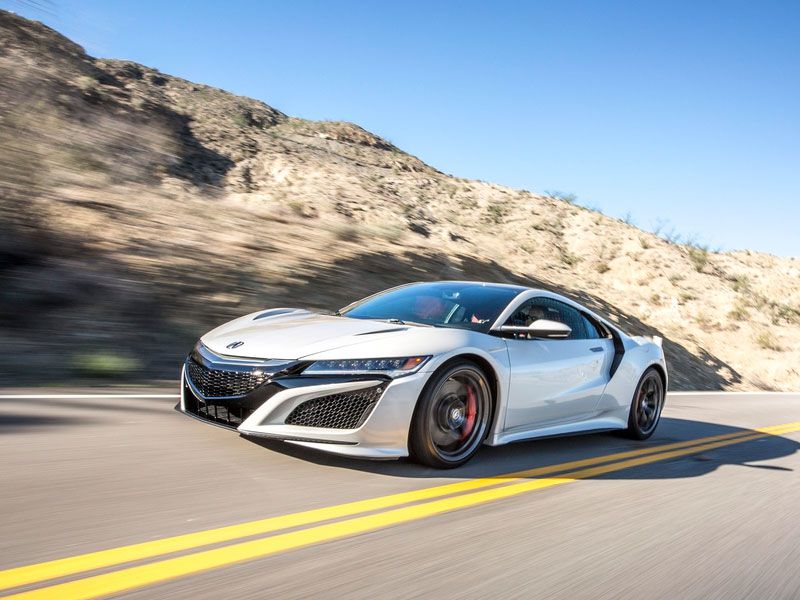
Photo by Acura
2017 Audi A3 Sportback E-tron
This is Audi’s only plug-in hybrid available in the United States so far, and it’s a hatchback version of the company’s smallest premium car. For something this compact, it packs quite a punch: 204 hp and 258 lb-ft of torque. Yet it still achieves the equivalent of 83 mpg when its electric-only range of 16 miles is factored in. The car will also let the driver run just on the combustion engine if the EV mode is needed later in the trip. On a more fun and less technical note, the top, ultra-classy Prestige trim comes with an ear-caressing Bang & Olufsen audio system sending 705 watts into 14 speakers.
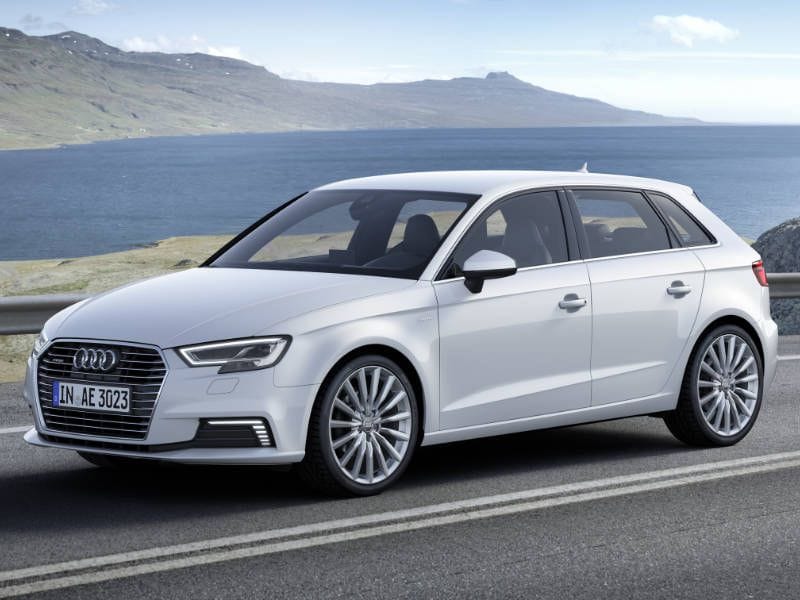
Photo by Audi
2017 BMW i3
While BMW is at the high end of the automotive world, the i3 isn’t exactly at the high end of the BMW catalog. But it is all-electric. Even the range-extended version only uses its small combustion engine as an on-board generator. And the i3, along with the i8 hybrid supercar, has rewritten the book on how cars can be constructed. It has a mostly carbon fiber body built onto an aluminum tub, so the car is light. Yet it’s also spacious for such a compact footprint. The i3 also brings “one-pedal driving” — where moving and slowing down can be achieved just by pressing or easing off the accelerator pedal. Range is expanded to 114 miles for 2017.
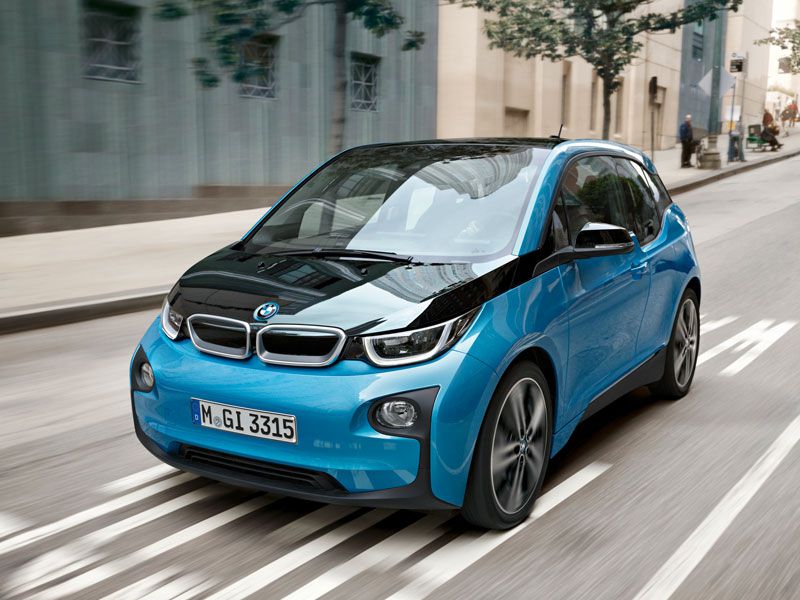
Photo by BMW
2017 Cadillac CT6 Plug-In
This particular variant of Cadillac’s newest flagship sedan is made in China. A turbocharged 2.0-liter 4-cylinder engine joins two electric motors to create 335 hp and 432 lb-ft of torque. Total range is 400 miles, electric-only range is 31 miles, 78 mph is possible in electric mode, and average consumption is the equivalent of 62 mpg. Carmakers often place their hybrids at the upper range of their lineups. The Plug-In comes with equipment that’s virtually the same as the second highest Premium Luxury trim level in the regular CT6, which includes features like a rear seat infotainment system and enhanced night vision.

Photo by Cadillac
2017 Lexus GS 450h
The GS is arguably the most successful Lexus sedan from a sporty point of view. This hybrid version doesn’t detract from its general goodness, but adds to it instead. There’s no plug-in paraphernalia, just a straight-ahead hybrid system that has proved itself time and again by parent company Toyota. The whole setup provides 338 hp; Lexus/Toyota does not quote torque figures for its hybrids, but electric motors tend to shine in that area and the GS 450h has plenty of off-the-line push. Yet it can still return 29 mpg in the city and 34 mpg on the highway. And there’s all that Lexus quality to enjoy, as well.
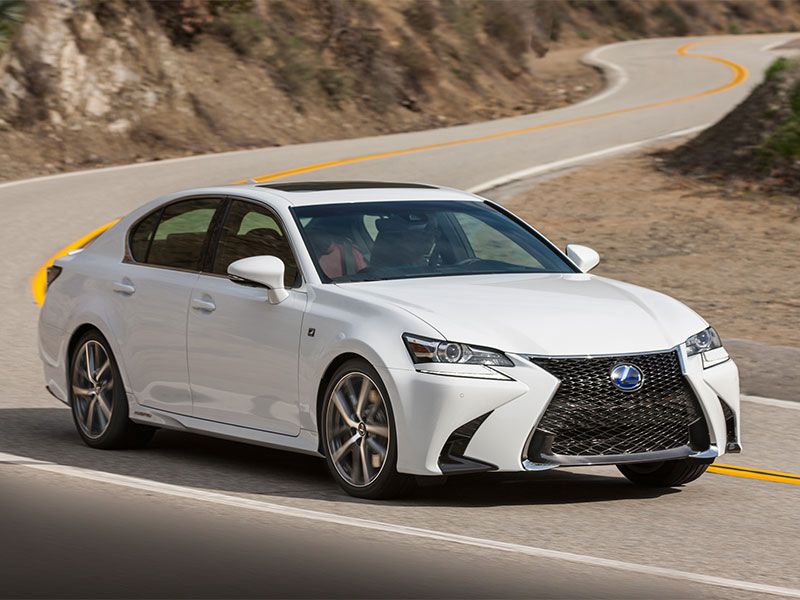
Photo by Lexus
2017 Lincoln MKZ Hybrid
Built on the excellent bones of the Fusion midsize sedan, Lincoln makes everything more luxurious. This is a straight-ahead hybrid system, no plugging in to think about, making 188 hp and averaging 40 mpg. And although some manufacturers charge a premium for their hybrid variants, that’s not the case here. But it takes more than that to succeed in the high-end car world, so Lincoln has established a Black Label service, which involves picking up and bringing back a customer’s car for routine maintenance (with a loaner in the meantime), plus things like a list of recommended restaurants. Lincoln can even supply a chauffeur to drive a customer’s own car for those special nights out.

Photo by Lincoln
2017 Mercedes-Benz S550e
While it’s still in existence, we use the Environmental Protection Agency (EPA) for estimating and comparing fuel consumption. It has a method of calculating fuel use for all-electric and plug-in hybrid vehicles called “miles per gallon equivalent,” or MPGe. The S550e achieves an average of 58 MPGe. And remember, this is not only a large luxury flagship sedan, but the latest generation of a car that really defined the sector. Even without the plug-in hybrid hardware, this car is a technological marvel. The amount of safety and convenience features on offer is enormous — for example, road sign recognition, ionized and fragranced air, and massaging seats. Let’s say it again: 58 MPGe. It’s cosseting with a conscience.
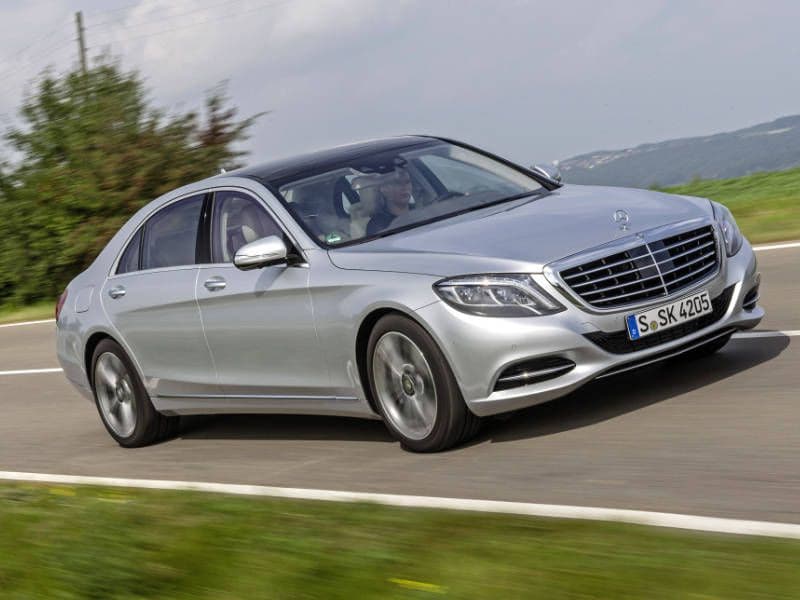
Photo by Mercedes-Benz
2018 Porsche Panamera Turbo S E-Hybrid
We’ll have to wait until the end of 2017, but this will be a plug-in hybrid luxury car like no other. The newly arrived second generation of Panamera shall expand to include its fastest, most powerful variant. With a turbocharged 4.0-liter V8 engine and an electric motor, this beast makes a mighty 680 hp and 626 lb-ft of torque. It drives all four wheels and streaks from standstill to 60 mph is 3.2 seconds — that’s in the supercar realm. Top speed is 192 mph. This really is a piece of exotica, just not a hard-riding, jaw-clenching 2-seater. It’s going to be expensive, starting around $185,000, but the amount of equipment and plushness will also be extensive.
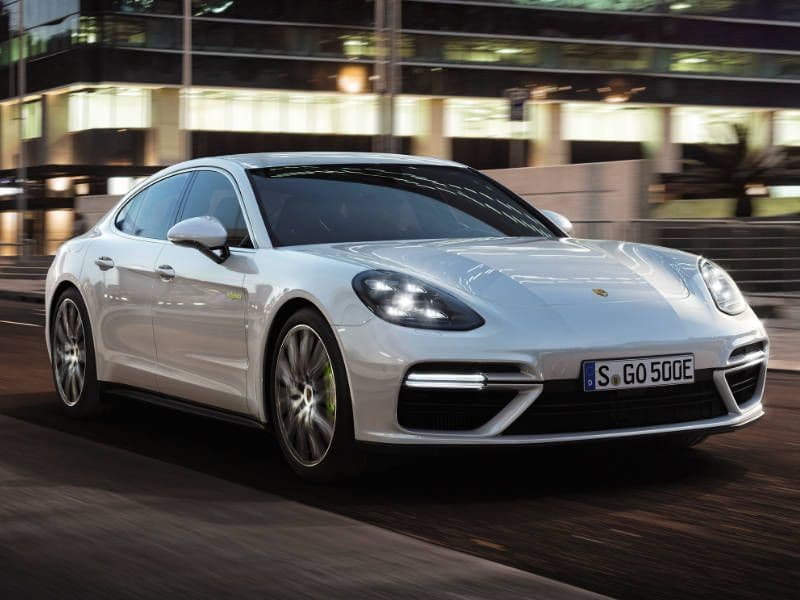
Photo by Porsche
2017 Tesla Model S
The fast-moving, suave-looking, tech-rich Model S is an indicator of how slow-moving the rest of the car industry really is. This all-electric luxury car has been around since 2012 and Tesla has established a network of fast chargers covering a lot of the United States, with more in Europe, Japan, China and Australia. Yet right now, coming up to the middle of 2017, there’s still no real competition. Perhaps the old guard saw electric vehicles only as grocery-getters or golf carts; the Model S shows us that they should be taken seriously. In other news, the MSRP of the entry level 75 version was recently reduced by $5,000 to $69,500, with extra standard equipment included.
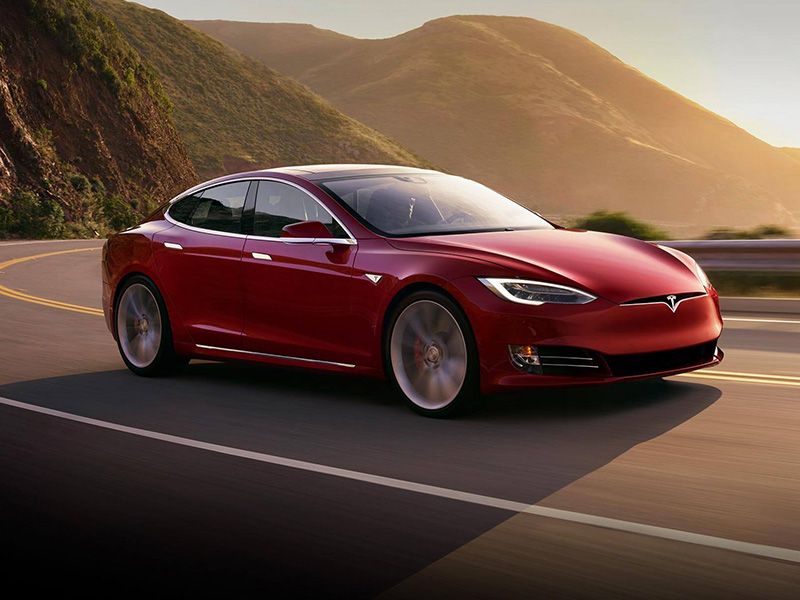
Photo by Tesla
2018 Volvo V90 T8 Twin Engine
This is the plug-in hybrid version of Volvo’s newest, largest and most sumptuous wagon. Yes, wagon. The V90 is based on the same platform as the S90 sedan and XC90 SUV. And if it looks good in pictures, it’s even better in three dimensions. Run a hand over the super-smooth wood trim and fine leather, and it’s hard to imagine anything more luxurious. And yet it’s still so practical, with maximum cargo space of 53.9 cubic feet. The T8 drivetrain has two electric motors, plus a turbocharged and supercharged 2.0-liter 4-cylinder engine, to make a total of 400 hp. There are no official consumption figures yet, but the electric-only range is expected to be around 30 miles.
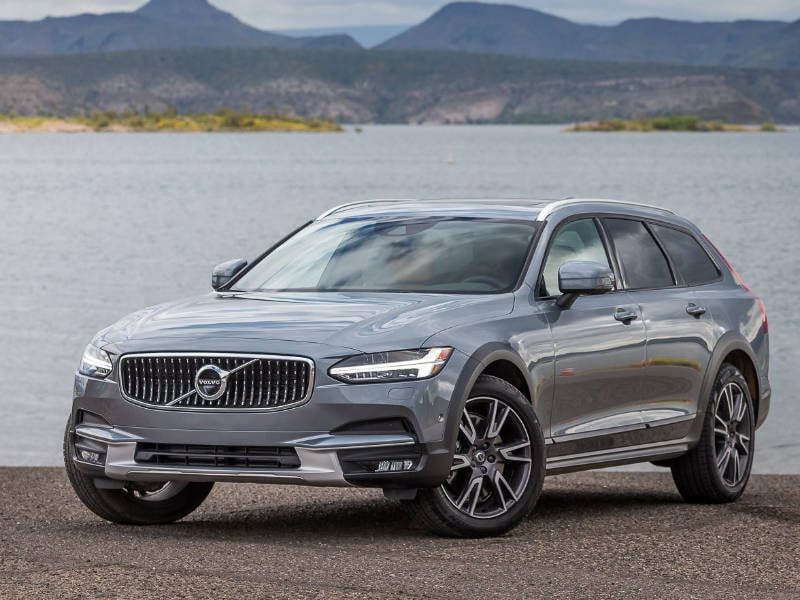
Photo by Volvo